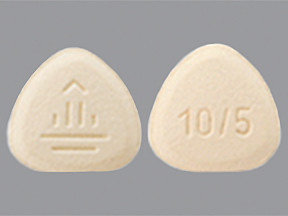EMPAGLIFLOZIN/LINAGLIPTIN - ORAL
PHONETIC PRONUNCIATION: (EM-pa-gli-FLOE-zin/LIN-a-GLIP-tin)
COMMON BRAND NAME(S): Glyxambi
GENERIC NAME(S): empagliflozin/linagliptin
Uses
USES: This medication is a combination of 2 drugs: empagliflozin and linagliptin. It is used with a proper diet and exercise program to control high blood sugar in people with type 2 diabetes. Controlling high blood sugar helps prevent kidney damage, blindness, nerve problems, loss of limbs, and sexual function problems. Proper control of diabetes may also lessen your risk of a heart attack or stroke. Empagliflozin works by increasing the removal of sugar by your kidneys. Linagliptin works by increasing levels of natural substances called incretins. Incretins help to control blood sugar by increasing insulin release, especially after a meal. They also decrease the amount of sugar your liver makes.
How to use EMPAGLIFLOZIN/LINAGLIPTIN - ORAL
HOW TO USE: Read the Medication Guide provided by your pharmacist before you start taking this medication and each time you get a refill. If you have any questions, ask your doctor or pharmacist. Take this medication by mouth with or without food as directed by your doctor, usually once daily in the morning. The dosage is based on your medical condition and response to treatment. Use this medication regularly to get the most benefit from it. To help you remember, take it at the same time each day. Tell your doctor if your condition does not improve or if it worsens (such as if your blood sugar is too high or too low).
Side Effects
Precautions
Interactions
Overdose
Images

- color
- pale pink
- shape
- 3 sided
- imprint
- logo, 25/5

- color
- pale pink
- shape
- 3 sided
- imprint
- logo, 25/5

- color
- pale pink
- shape
- 3 sided
- imprint
- logo, 25/5

- color
- pale pink
- shape
- 3 sided
- imprint
- logo, 25/5

- color
- pale yellow
- shape
- 3 sided
- imprint
- logo, 10/5

- color
- pale yellow
- shape
- 3 sided
- imprint
- logo, 10/5

- color
- pale yellow
- shape
- 3 sided
- imprint
- logo, 10/5

- color
- pale yellow
- shape
- 3 sided
- imprint
- logo, 10/5
Reviews
Faq for EMPAGLIFLOZIN/LINAGLIPTIN - ORAL
Empagliflozin/Linagliptin is an oral medication used to treat type 2 diabetes by improving glycemic control.
Empagliflozin/Linagliptin works by increasing the excretion of glucose in the urine and improving the body's sensitivity to insulin, helping to lower blood sugar levels.
Common side effects of Empagliflozin/Linagliptin include urinary tract infections, yeast infections, thirst, increased urination, hypoglycemia (low blood sugar levels), and dizziness.
Empagliflozin/Linagliptin can be used alone or in combination with other diabetes medications, depending on your doctor's recommendation and your specific diabetes needs.
Yes, it is important to inform your doctor if you have a history of kidney problems, liver disease, or if you are pregnant or breastfeeding. Empagliflozin/Linagliptin may also increase the risk of genital yeast infections in both men and women.
Empagliflozin/Linagliptin is typically taken once a day with or without food. It is important to follow your doctor's instructions and take the medication as directed.
Yes, there is a possibility of experiencing low blood sugar while taking Empagliflozin/Linagliptin, especially if used in combination with other diabetes medications. It is important to monitor your blood sugar levels closely and seek medical attention if you experience symptoms of hypoglycemia.
Certain medications, such as diuretics and insulin, may interact with Empagliflozin/Linagliptin and affect your blood sugar levels. It is vital to inform your doctor about all the medications you are taking to avoid any potential interactions.
The effects of Empagliflozin/Linagliptin on blood sugar control may vary for each individual. It is best to consult with your doctor to determine how long it takes for the medication to start working in your case.
Disclaimer
IMPORTANT: HOW TO USE THIS INFORMATION: This is a summary and does NOT have all possible information about this product. This information does not assure that this product is safe, effective, or appropriate for you. This information is not individual medical advice and does not substitute for the advice of your health care professional. Always ask your health care professional for complete information about this product and your specific health needs.
No Reviews Yet